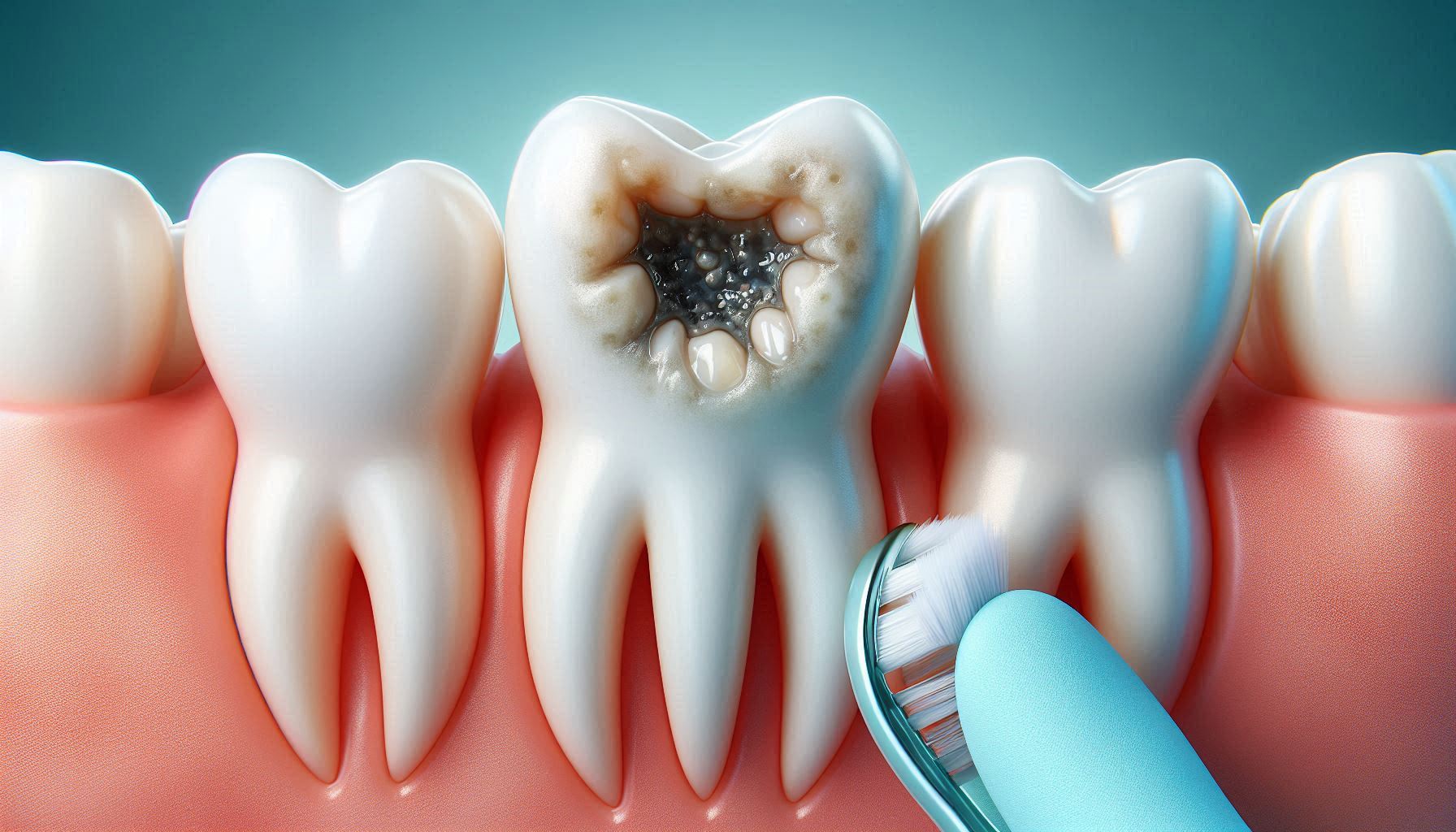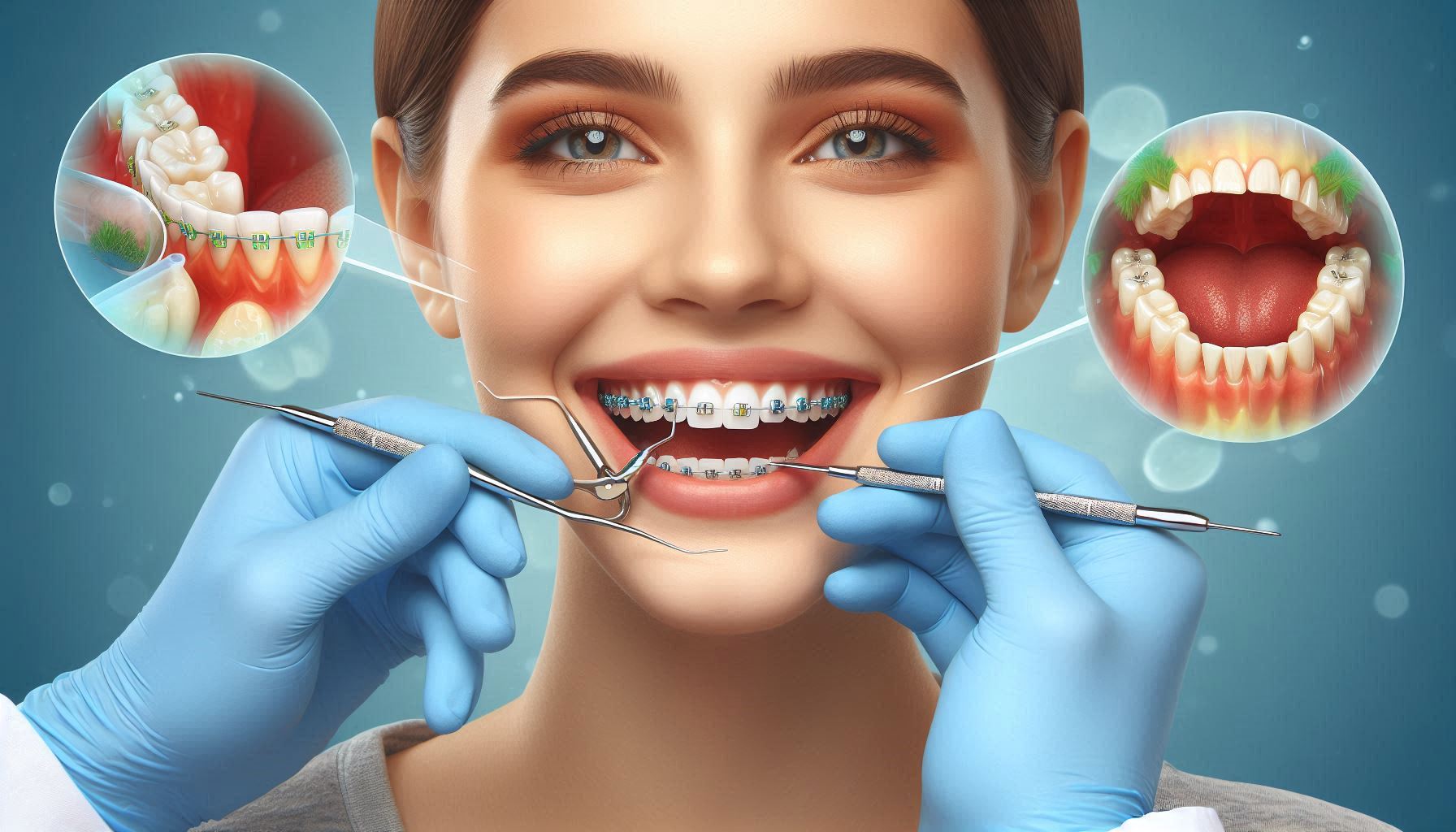Tooth decay, also known as dental caries or cavities, is a prevalent oral health issue that affects millions of people worldwide. This condition can lead to significant discomfort, loss of teeth, and severe health complications if not addressed properly. In this comprehensive guide, we will delve into the intricacies of tooth decay, exploring its causes, symptoms, prevention, and treatment options, ultimately empowering you to protect your smile.
Understanding Tooth Decay
Tooth decay is a multifaceted process that involves the breakdown of tooth structure due to the activity of bacteria. These bacteria thrive on sugars and carbohydrates, producing acids that attack the enamel, the tooth’s hard outer layer. Over time, if not managed, this decay can progress deeper into the tooth, leading to more severe health issues.
The Anatomy of a Tooth
To fully grasp how tooth decay occurs, it’s essential to understand the structure of a tooth. Each tooth consists of several layers:
- Enamel: The hardest substance in the human body, enamel is the outer layer that protects the tooth from decay. It is made primarily of minerals, primarily hydroxyapatite.
- Dentin: Beneath the enamel lies dentin, a softer tissue that is less mineralized than enamel. Dentin contains tiny tubules that can transmit sensations, making it sensitive to temperature changes and pressure.
- Pulp: The innermost part of the tooth, the pulp, contains nerves, blood vessels, and connective tissue. It is responsible for the tooth’s vitality and sensory functions.
- Cementum: This is the layer that covers the root of the tooth, helping anchor it to the jawbone.
Understanding these layers is crucial because decay that begins in the enamel can progress to the dentin and eventually reach the pulp, causing pain and potential tooth loss.
How Tooth Decay Develops
Tooth decay develops through a series of stages:
- Plaque Formation: The mouth is home to various bacteria that form a sticky film known as plaque on the teeth. This film adheres to the tooth surface and can harden into tartar if not removed through brushing and flossing.
- Acid Production: When you consume foods or drinks high in sugar, the bacteria in plaque feed on these sugars and produce acids as a byproduct. These acids attack the enamel, initiating the demineralization process.
- Demineralization: Initially, the enamel may lose some minerals, leading to the formation of white spots on the teeth. This early stage is often reversible with good oral hygiene and fluoride treatment.
- Cavity Formation: If the demineralization continues without intervention, a cavity will form—a permanent hole in the tooth that can expand deeper into the tooth structure.
- Pulp Involvement: As decay progresses, it can reach the pulp, leading to infection, abscess, and severe pain. This stage often requires more invasive treatments, such as root canals or extractions.
Causes of Tooth Decay
Tooth decay is influenced by a variety of factors. Understanding these can help you mitigate your risk effectively.
1. Dietary Habits
Your diet plays a significant role in tooth decay. Foods high in sugar and acid are particularly harmful. Some common culprits include:
- Sugary Snacks: Candy, cookies, and pastries provide a constant source of sugar for bacteria.
- Soda and Sweetened Beverages: Soft drinks and energy drinks contain high levels of sugar and acid, contributing to enamel erosion.
- Fruit Juices: Although often considered healthy, many fruit juices contain high sugar levels and can be acidic.
2. Poor Oral Hygiene
Neglecting oral hygiene allows plaque to accumulate on your teeth. Inadequate brushing and flossing can lead to:
- Increased Plaque Build-Up: Plaque can harden into tartar, which is much more difficult to remove and requires professional cleaning.
- Gum Disease: Poor oral hygiene can lead to gingivitis and periodontitis, conditions that can further exacerbate tooth decay.
3. Dry Mouth
Saliva plays a crucial role in oral health. It helps neutralize acids and wash away food particles. Factors that can contribute to dry mouth include:
- Medications: Many prescription and over-the-counter medications have dry mouth as a side effect.
- Health Conditions: Certain conditions, such as diabetes or autoimmune disorders, can reduce saliva production.
4. Fluoride Deficiency
Fluoride is a mineral that strengthens enamel and helps remineralize areas affected by early decay. A lack of fluoride can increase the risk of cavities. Sources of fluoride include:
- Fluoridated Water: Many municipalities add fluoride to drinking water.
- Toothpaste: Most commercial toothpaste contains fluoride.
- Professional Treatments: Dentists can provide fluoride treatments for those at higher risk of decay.
5. Age and Genetics
Certain age groups are more susceptible to tooth decay:
- Children: Their enamel is still developing, making it more vulnerable to decay.
- Older Adults: Gum recession can expose root surfaces, which are more prone to decay.
Genetics can also play a role in an individual’s susceptibility to decay, as some people may naturally have stronger or weaker enamel.
Symptoms of Tooth Decay
Tooth decay may not always present noticeable symptoms in its early stages. However, as the condition progresses, the following signs may appear:
1. Early Signs
- White Spots: The first sign of demineralization appears as white spots on the enamel.
- Sensitivity: Increased sensitivity to hot, cold, or sweet foods and beverages can indicate that decay is beginning to affect the dentin.
2. Advanced Symptoms
- Pain: A persistent toothache, especially when biting or chewing, may indicate a cavity.
- Visible Cavities: As decay progresses, you may notice dark spots or holes in your teeth.
- Bad Breath: Foul-smelling breath can result from decaying food particles and bacteria in the mouth.
- Swelling: Swelling in the gums or around the affected tooth can indicate infection.
Prevention Strategies
Preventing tooth decay involves a proactive approach combining good oral hygiene practices, dietary choices, and regular dental visits. Here are several effective strategies:
1. Maintain Good Oral Hygiene
Good oral hygiene is your first line of defense against tooth decay. Here are some key practices:
- Brush Twice Daily: Use a fluoride toothpaste to brush your teeth at least twice a day. Make sure to brush for two minutes each time, covering all surfaces of the teeth.
- Floss Daily: Flossing is essential for removing plaque and food particles from between the teeth and below the gumline, where toothbrushes can’t reach.
- Use Mouthwash: An antimicrobial or fluoride mouthwash can help reduce plaque and bacteria, providing an additional layer of protection.
2. Dietary Considerations
Your diet significantly impacts your oral health. Here are some tips for making healthier choices:
- Limit Sugary Foods and Drinks: Reduce your intake of candy, soda, and other sugary snacks. Opt for healthier alternatives such as fruits, vegetables, and whole grains.
- Eat a Balanced Diet: Incorporate a variety of nutrient-rich foods, including dairy products (which contain calcium), lean proteins, fruits, and vegetables. These foods contribute to overall dental health.
- Drink Water: Staying hydrated helps maintain saliva production. Choose fluoridated water when possible to strengthen your teeth.
3. Regular Dental Visits
Regular checkups with your dentist are crucial for maintaining oral health. Consider the following:
- Schedule Routine Cleanings: Visit your dentist at least twice a year for professional cleanings. These cleanings can remove plaque and tartar that you may have missed at home.
- Early Detection: Regular visits allow your dentist to catch early signs of decay, making treatment easier and less invasive.
- Consider Sealants: Dental sealants are thin, protective coatings applied to the chewing surfaces of molars to prevent cavities, especially in children and adolescents.
4. Fluoride Treatments
Fluoride is a vital mineral for tooth health. Here are ways to ensure you’re getting enough:
- Use Fluoride Toothpaste: Ensure your toothpaste contains fluoride, as this helps to strengthen enamel.
- Ask About Professional Treatments: Your dentist can apply fluoride varnishes or gels during your visits, especially if you are at a higher risk for cavities.
5. Avoid Tobacco Products
Tobacco use can increase the risk of tooth decay and gum disease. If you smoke or use tobacco, seek resources to help you quit. Not only will this benefit your oral health, but it will also improve your overall well-being.
6. Educate Yourself and Others
Knowledge is power. Stay informed about oral health and share what you learn with friends and family. Encourage children to develop healthy habits early on, setting them up for a lifetime of good oral health.
Treatment Options for Tooth Decay
If tooth decay does occur, several treatment options are available, depending on the severity of the decay.
1. Fluoride Treatments
For early-stage decay (white spots), fluoride treatments can help remineralize the enamel and reverse the damage. This treatment can be administered by your dentist in a concentrated form.
2. Fillings
If a cavity has formed, the most common treatment is a filling. During this procedure:
- The dentist will remove the decayed portion of the tooth.
- The empty space is filled with a dental material such as composite resin, amalgam, or glass ionomer.
3. Crowns
For more extensive decay that compromises the tooth’s structure, a crown may be necessary. A crown is a custom-made cap that covers the entire tooth, restoring its shape and function. The dentist will prepare the tooth, taking impressions to create the crown, which is placed after the decay has been removed.
4. Root Canal Therapy
If decay reaches the pulp, a root canal may be needed. This procedure involves:
- Removing the infected pulp from the tooth.
- Cleaning and disinfecting the root canals.
- Filling the empty space with a material to seal it.
- Often, a crown is placed afterward to restore the tooth’s appearance and function.
5. Extractions
In cases of severe decay where the tooth cannot be saved, extraction may be necessary. After extraction, options for replacement may include dental implants, bridges, or dentures.
The Importance of Oral Health
Maintaining good oral health extends beyond just having a beautiful smile. It is intricately linked to overall health. Poor oral health has been associated with various systemic conditions, including:
- Heart Disease: Inflammation and bacteria from gum disease can contribute to heart problems.
- Diabetes: Poor oral health can make it more difficult to control blood sugar levels.
- Respiratory Infections: Bacteria from the mouth can be inhaled into the lungs, leading to infections.
- Pregnancy Complications: Pregnant women with gum disease may face an increased risk of preterm birth and low birth weight.
Investing time in your oral health is an investment in your overall health and well-being.
Conclusion
Tooth decay is a common yet preventable condition that can significantly impact your oral and overall health. By understanding the causes, symptoms, and treatment options, you can take proactive steps to protect your smile. Implementing good oral hygiene practices, making informed dietary choices, and scheduling regular dental visits will go a long way in preventing tooth decay and maintaining your dental health.
Remember, a healthy smile not only enhances your appearance but also contributes to your confidence and overall quality of life. Take charge of your oral health today, and enjoy the benefits of a lifetime of healthy smiles.
SOURCES
myHealth Dentistry – Tooth Decay: What You Need to Know
Dentisttree.info – Preventing Tooth Decay: Top Tips to Save Your Teeth from Getting Rotten
NIDCR – Tooth Decay
Smile Savers Dentistry – Understanding Tooth Decay – Causes, Symptoms, and Treatment
HISTORY
Current Version
October 14, 2024
Written By:
SUMMIYAH MAHMOOD




